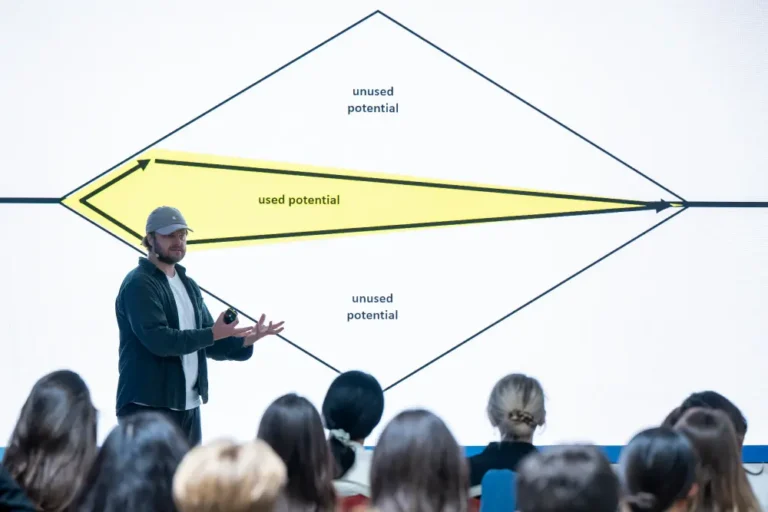Why do some people seem to generate ideas effortlessly, while others bring calm and structure to chaotic processes? Why are there team members who build bridges between differing opinions, while others prefer to quietly observe and detect patterns?
Research from LMU Munich and Siemens shows that creativity is not innate genius but a combination of specific behaviors. From these, five central creativity types can be derived. Each type brings unique strengths, perspectives, and habits that can be trained. And no type is “better” than another – true innovation only emerges when they work together.
If the following five creativity types spark your curiosity, you can discover your own type with our Creative Behavior Quiz. This will help you see which strengths you already use – and which behaviors you can still train. For teams, we also recommend our Starter Workshops, where the different types become visible and groups experience how diversity truly fuels creative processes.
Type 1: The Sensemaker – Bringing Structure to Chaos
Sensemakers are clarity creators. They can organize complex information, make connections visible, and present ideas in ways others can easily grasp.
Typical behavior: They visualize processes, tell stories, or use metaphors to make complex problems understandable.
Example: In a workshop, ideas are flying wildly in all directions. The Sensemaker draws a diagram on the wall, summarizes the themes, and creates orientation for the group.
Type 2: The Cultivator – Enabler of Creativity
Cultivators make sure creativity can emerge in the first place. They foster an atmosphere of trust, psychological safety, and collaboration.
Typical behavior: They actively ask for opinions, make sure quiet voices are heard, and remove obstacles.
Example: In a meeting, a young colleague stays silent. The Cultivator addresses her directly, gives her space, and signals that her idea is valued.
Type 3: The Imaginator – Visionary and Idea Generator
Imaginators think big, bold, and in vivid images. They are the visionaries who imagine new futures and inspire others with them.
Typical behavior: They combine seemingly unrelated elements, use metaphors, sketch future scenarios, and develop visionary concepts.
Example: In a project exploring the future of mobility, the Imaginator sketches a city without cars, filled with drone taxis and green skyscrapers – a scenario that sparks new discussions.
Type 4: The Unboxer – Pattern Breaker
Unboxers are the challengers of the status quo. They question assumptions, break routines, and combine the unexpected.
Typical behavior: They ask uncomfortable questions (“Why do we do it this way?”), try unusual approaches, and uncover blind spots.
Example: In a company, product development always follows the same procedure. The Unboxer asks, “What if we reversed the process completely?” – opening up a fresh perspective.
Type 5: The Observer – Subtle Perceiver
Observers notice what others miss. They are highly attentive, picking up on details, patterns, and subtle changes.
Typical behavior: They listen deeply, observe team dynamics, and identify opportunities or risks early.
Example: In a conversation, a minor comment almost slips by unnoticed. The Observer highlights it, showing that it contains a valuable idea.
Why the Five Types Matter
The research is clear: teams are most creative when all five types are present. That’s when balance emerges. A team full of visionaries may generate endless ideas but struggle to implement them. A team full of Sensemakers may be efficient but rarely truly innovative. Diversity is the key.
The study also shows: every person can embody multiple types. It’s not about putting yourself in a box but about becoming aware of your own behaviors and training new ones. Creativity is like a muscle – it grows with practice.
The Link to Creative Behaviors
Behind each type are specific trainable behaviors. The Cultivator, for example, thrives on skills such as “creating psychological safety” or “fostering diversity.” The Imaginator strengthens their role through association exercises and visual thinking.
This means that by knowing your type, you can deliberately work on your Creative Behaviors and gradually expand your creative capacity.
Conclusion
The five creativity types are a practical model for better understanding your role in a team and how teams function as a whole. They show that creativity is not a mystical gift but the result of concrete, learnable behaviors.
The crucial question is not “Which type am I?” but: How can I make the most of my strengths – and which new behaviors can I practice to become more creative?
Take our quiz and find out your type!

